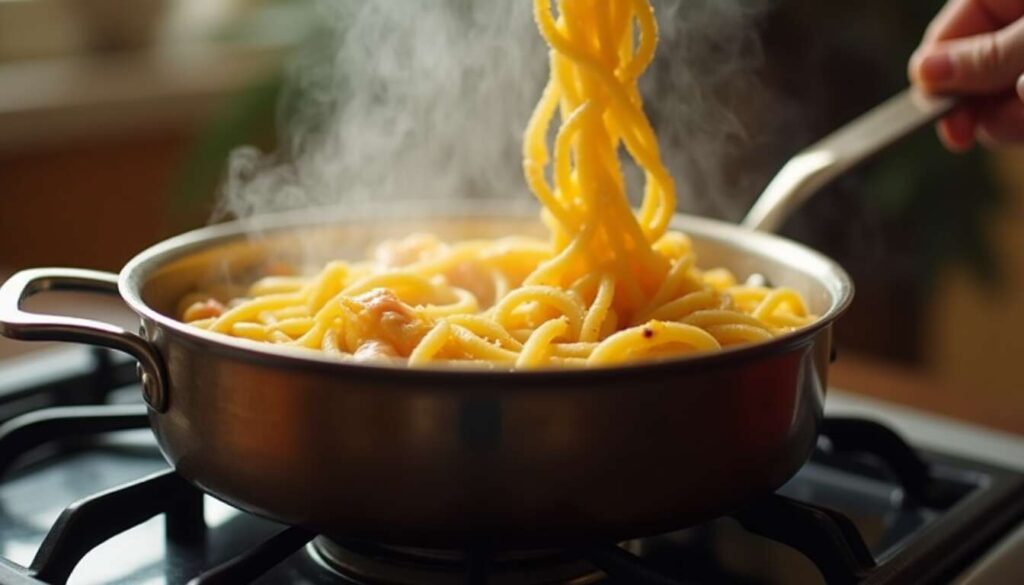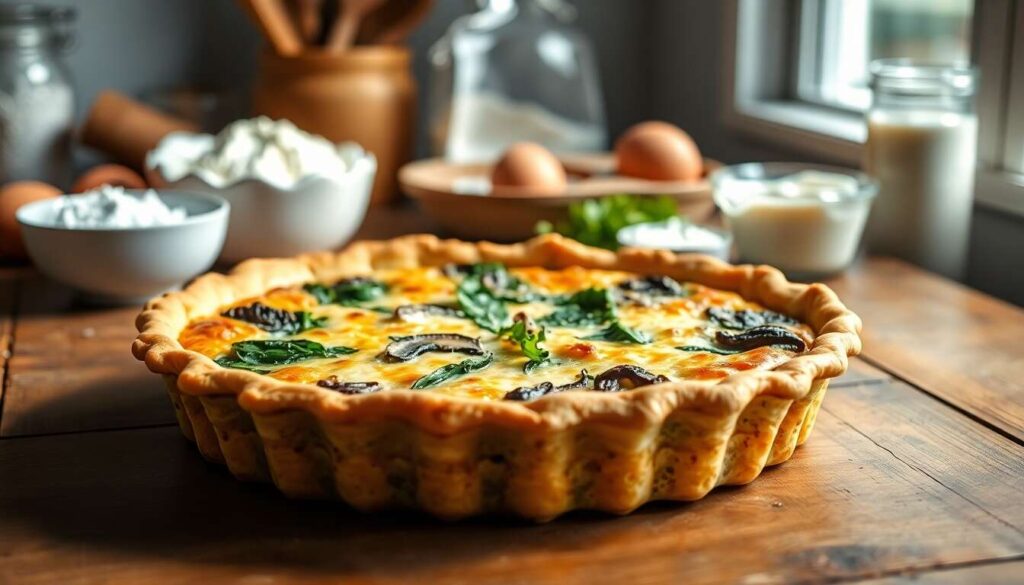Cooking pasta al dente is a culinary art that many strive to master. However, common mistakes often hinder the pursuit of this level of perfection. In this article, discover how to avoid these pitfalls and achieve Italian-style pasta cooked to perfection, elevating your dishes to new heights.
Avoid using a small pot
The importance of pot size
Selecting an appropriate pot is essential for boiling pasta. A pot that is too small won’t allow the pasta to move freely, leading to uneven or sticky cooking. Using a large pot is crucial for even heat distribution and to prevent the pasta from clumping together.
The consequences of using a small pot
A small pot filled with boiling water and pasta can quickly overflow. Moreover, the pasta will become crowded, preventing water from circulating properly around it. This limitation diminishes the cooking efficiency and can result in mushy, unappetizing pasta.
Choosing the right size
For successful cooking, choose a pot of at least six liters for every 500 grams of pasta. The goal is to provide ample space for the water to boil freely, ensuring that the pasta cooks evenly.
Next, let’s explore the significance of adhering strictly to the cooking time, another crucial factor for achieving al dente pasta.
Adhere strictly to cooking times
The importance of timing
The cooking time indicated on the pasta package should not be overlooked. Each type of pasta has its specific characteristics and appropriate cooking times to guarantee the perfect al dente texture. Ignoring this factor can lead to pasta that is either overcooked or undercooked.
The dangers of overcooking
Overcooking pasta renders it soft and devoid of the desired firmness. To avoid this, begin tasting the pasta one minute before the recommended cooking time is up. This way, you can drain it at the right moment to maintain that ideal texture.
| Type of pasta | Recommended cooking time (minutes) |
|---|---|
| Spaghetti | 8-10 |
| Penne | 10-12 |
| Fusilli | 9-11 |
Now that we’ve discussed cooking time, let’s see why salting the water at the beginning of the cooking process is crucial for the flavor of your pasta.
Salt the water properly from the start
The effect of salt on flavor
Adding salt to the boiling water is vital for flavorful pasta. The salt enhances the taste of the pasta by seasoning it from the inside. A proper dosage (about 10g per liter of water) is necessary for optimal flavor.
The right moment to salt
Salting the water after it has reached a boil is a common practice, as it allows for better dissolution of the salt. Do not wait until the pasta is in the water to add the salt, as this could compromise the final taste.
After properly salting the water, let’s delve into a common mistake: adding oil during cooking, which should be absolutely avoided.
Never add oil to the cooking water
Why oil is unnecessary
Many believe that adding oil to the cooking water prevents the pasta from sticking, but this is a misconception. Oil does not mix with water and merely floats on the surface, providing no real benefit to the cooking pasta.
The impact on sauce adhesion
By following this practice, you risk creating a greasy film on the pasta that prevents the sauce from adhering properly. This diminishes the tasting experience and the integration of the sauce’s flavors. Thus, avoid adding oil to the water at all costs.
The absence of oil during cooking can be compensated by a simple action: mingling the pasta regularly. Let’s explore this essential step in the cooking process.
Mix the pasta regularly
Preventing sticking through mixing
Stirring the pasta while it cooks is critical to preventing it from sticking together. It is advisable to mix them immediately after adding them to the boiling water and to repeat this action every two minutes.
Other benefits of mixing
By stirring regularly, you ensure uniform cooking of all pasta pieces. This also helps distribute heat and starch evenly, aiding in achieving the ideal texture.
Having examined the importance of stirring, let’s discuss starch, which plays a central role in achieving a perfect texture.
The importance of starch for a perfect texture
The crucial role of starch
The starch released by the pasta during cooking acts as a natural binder for the sauce. It helps ensure a smooth and creamy texture. Instead of rinsing your pasta after cooking, let the starch mix with the sauce to enhance the dish.
How to take advantage of the starch
After cooking, retain a bit of the starchy pasta water to incorporate into your sauce. This strengthens the bond between the sauce and the pasta while enriching the overall flavor and texture of the dish.
Now, let’s address the final crucial step before serving your pasta, emphasizing why you should never let it rest.
Avoid letting the pasta rest after cooking
Serve immediately
Once the pasta is cooked, do not let it rest. This will cause it to soften and continue cooking in the residual heat, losing its al dente texture.
The importance of good timing
Coordinate the end of the pasta cooking with the preparation of the sauce to avoid any delays between the two. This will allow you to mix the pasta with your sauce immediately, preserving all the qualities of your fresh pasta.
To perfect the art of cooking al dente pasta, let’s explore some tips from Italian chefs for a restaurant-worthy result.
Embrace the tips from Italian chefs for success
Incorporating cooking water into the sauce
Italian chefs often use a small amount of cooking water to bind the sauce and pasta together. This technique gives your dishes a remarkable consistency and flavor, making the sauce creamier.
Choosing the right accompaniments
- Prefer simple sauces that highlight the natural flavor of the pasta.
- Opt for fresh ingredients like tomatoes, basil, or garlic.
- Avoid overcrowding your pasta; prioritize quality over quantity of ingredients.
Understanding how to season
Italian chefs emphasize the importance of balance in flavors. This entails correctly measuring salt, pepper, and other herbs to enhance your dish without overwhelming it.
By applying these tips and techniques, you can easily transform a basic dish into a savory and authentic meal, perfect for sharing with family and friends.
Mastering the art of cooking al dente pasta requires attention to detail and proper practices. By avoiding common mistakes such as using small pots or adding oil, and by following tried-and-true techniques, you will significantly elevate your dishes. Never underestimate the importance of good seasoning and the clever integration of tips from Italian chefs. Apply these principles for successful dishes that will delight your palate and that of your guests. Bon appétit!







